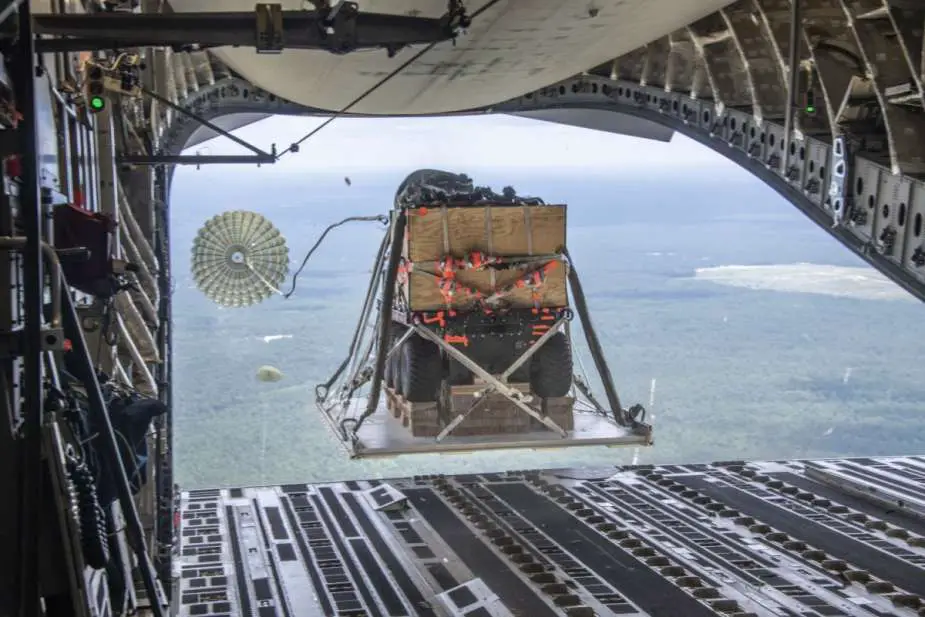Breaking news
Successful airdrop of new US S-MET ground transport drone.
The US Army's airborne soldiers at Fort Liberty, North Carolina, recently conducted low-velocity airdrop tests of a new remote-controlled equipment transport system, the Small Multipurpose Equipment Transport (S-MET). Orchestrated by the Airborne and Special Operations Test Directorate, the operation notably included a Simulated Airdrop Impact Test to ensure that the system could withstand the impact forces upon landing after the drops.
Follow Air Recognition on Google News at this link
 Airborne Soldiers executed low-velocity airdrop tests of a new remote-controlled equipment transport system (Picture source: US DoD)
Airborne Soldiers executed low-velocity airdrop tests of a new remote-controlled equipment transport system (Picture source: US DoD)
According to Mr. Jacob Boll, an operational research analyst for the Airborne and Special Operations Test Directorate, the S-MET provides small, dismounted units the ability to generate power for organic electronic systems. After completing the Simulated Airdrop Impact Test, the S-MET was prepared for a low-velocity airdrop.
The S-MET alleviates physical burdens while operating as a dispersed and decentralized force in austere environments over long periods. The tests aimed to evaluate the operational effectiveness and suitability of the S-MET for low-velocity airdrop operations, Boll noted.
This drone supports the mobility needs of Infantry Brigade Combat Teams and aligns with the army's vision to urgently implement Robotic and Autonomous Systems capabilities to reduce risks to soldiers during combat.
Multiple successful low-velocity airdrop iterations were completed, followed by operational exercises including various maneuver drills. According to Mr. Glen Nino, a data collector for the Airborne and Special Operations Test Directorate, the data and feedback collected inform army leaders about the low-velocity airdrop operations of the S-MET for making production decisions.
Before the airdrop operations, soldiers were trained on the S-MET, including an overview of the vehicle's instrumentation and controls, as well as instruction on the tactical operation of the S-MET; a vehicle demonstration of its basic instrumentation, controls, and performance of various crew drills.
"The soldiers were able to witness the S-MET’s ability to negotiate operationally relevant terrain profiles," said Mr. James Cochran, a military test plans analyst for the Airborne and Special Operations Test Directorate.
"Operational testing is an opportunity for the US Army Operational Test Command to contribute to readiness; anything less compromises the army's ability to provide for the forces that fight and win the nation's wars," stated Lt. Col. Derek Johnson, the test division chief for the Airborne and Special Operations Test Directorate.


























